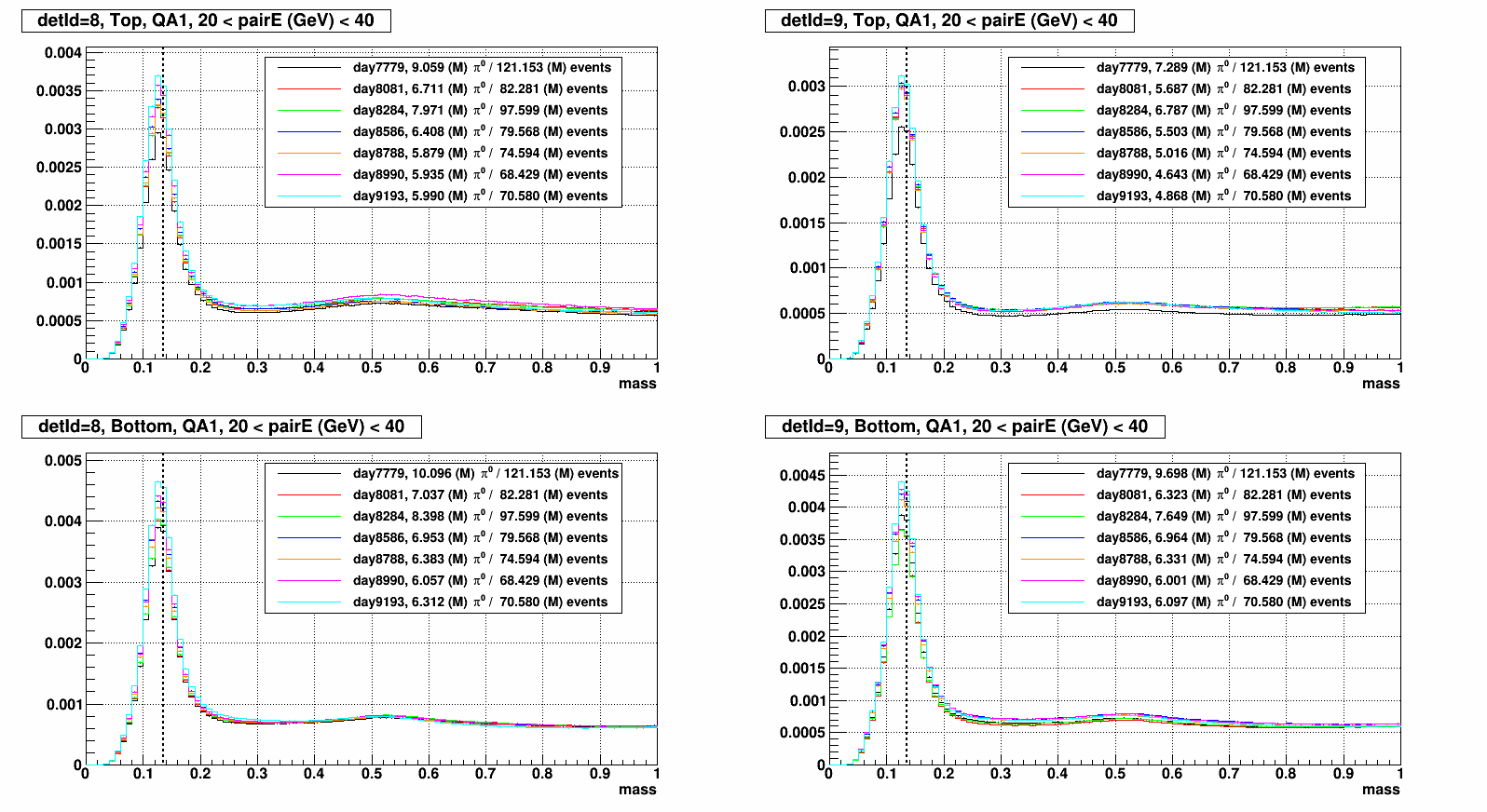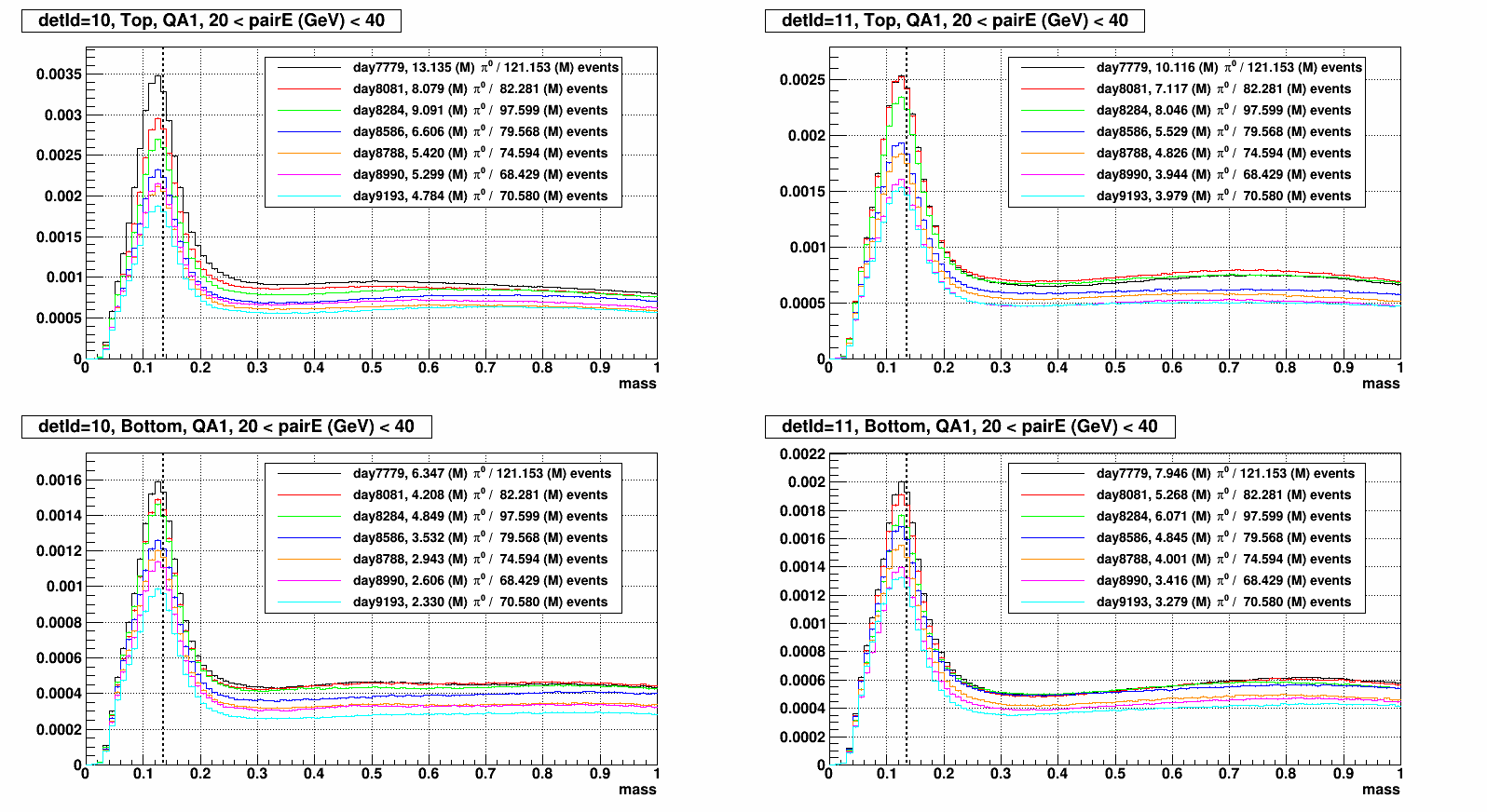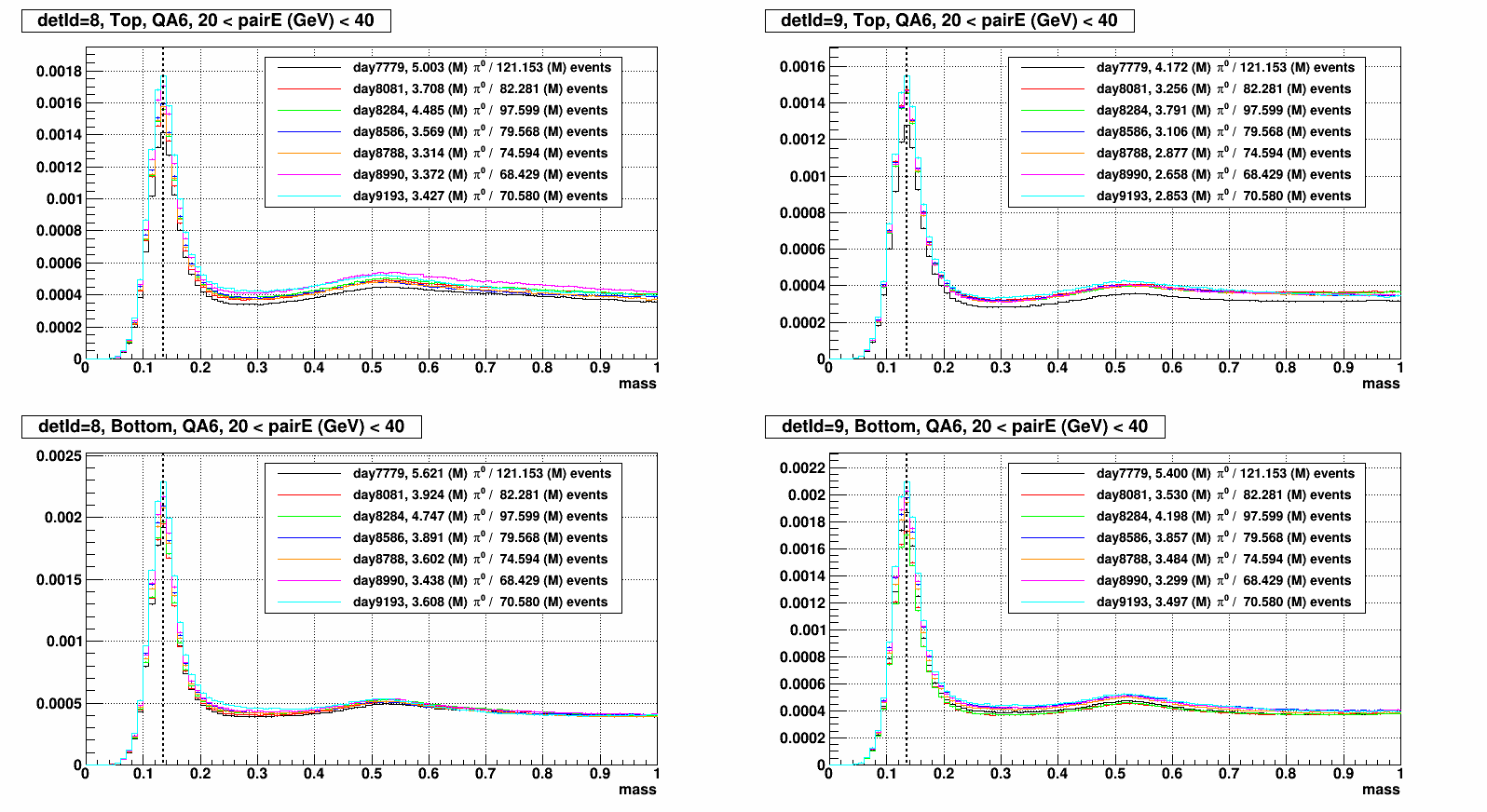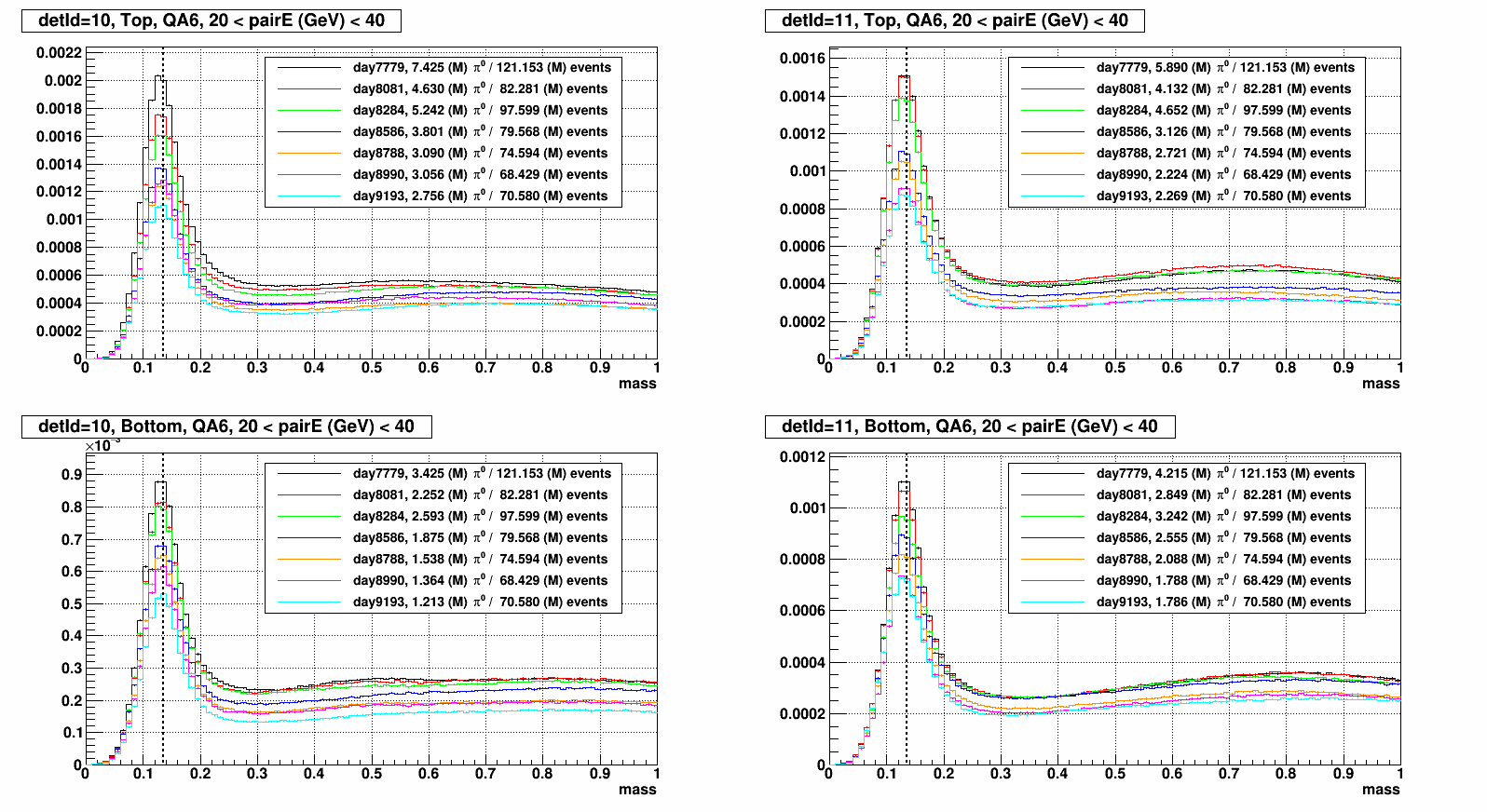- ckimstar's home page
- Posts
- 2020
- 2019
- December (1)
- November (1)
- October (1)
- September (4)
- August (4)
- July (3)
- June (2)
- May (2)
- April (2)
- March (5)
- February (1)
- January (1)
- 2018
- December (5)
- November (1)
- October (3)
- September (2)
- August (3)
- July (4)
- June (3)
- May (2)
- March (4)
- February (4)
- January (5)
- 2017
- December (2)
- November (3)
- October (4)
- September (5)
- August (6)
- July (2)
- June (3)
- May (4)
- April (5)
- March (4)
- February (3)
- 2016
- My blog
- Post new blog entry
- All blogs
RUN15 cell degradation study, by mass
- Degradation study by gainCorr:
a. drupal.star.bnl.gov/STAR/blog/ckimstar/run15-cell-degradation-study
b. drupal.star.bnl.gov/STAR/system/files/CKim_PWGSpin_190812.pdf
//-------------------------------------------------------------------------------
- Degradation study by reconstructed pi0
a. Follows QA items and definition in previous report (drupal.star.bnl.gov/STAR/blog/ckimstar/run15-pptrans-calibration-final-qa-2)
b. Checked mass distributions with following conditions:
b-1. day 77 - day 93, 7 subgroups share same HV setting
b-2. After final iteration and gainCorr finalization
b-3. Checked 20 < pairE (GeV) < 40
b-4. Normalized each distribution by # of events processed
b-5. Two QA types will be shown: QA1 (Zgg + zVtx) and QA6 (Zgg + zVtx + SPC +CQC)
c. Notable and Strong degradation effect in small cells, but large cells' degradation effect look rather weak:
consistent to previous study based on gainCorr
c-1. QA1


c-2. QA6 (closest to calibration condition)


- ckimstar's blog
- Login or register to post comments
